Before I get into my piece looking at how the 2015 Lexus RC F lines up with the American muscle cars, I want to make a few things clear, as I can imagine the keyboard warriors preparing to lambaste me for comparing a Japanese luxury performance coupe to an American muscle car. I do not mean for this to be a direct comparison in any way, but rather a look at how one of Japan’s most popular sports cars sold in the US relates to and differs from America’s most popular sports cars. After all, they are all 2-door, rear wheel drive coupes with four seats, V8 engines and power levels in the mid to high 400 range.
However, the 2015 Lexus RC F is a luxury sports car, with just as much emphasis on comfort as performance and that leads to a car that is both far more expensive and far more luxurious than anything from the Mustang or Camaro camp, while the SRT Challenger offers some competition in terms of comforts. The RC F starts just over $63,000, which is comparable to the 707 horsepower Hellcat Challenger where the V8 Mustang and V8 Camaro start in the low 30s, so the odds are very good that most people shopping for a new RC F aren’t also considering the Mustang GT or Camaro SS, but I have met people who cross-shopped the sexy Lexus sport coupe against the American muscle cars based simply on the fact that they are all fast, rear wheel drive coupes.
Also Watch: Torque News Track-tests the V8-powered Lexus RC F at the Monticello Motor Club October 2015
Where the Lexus RC F Has No Competition
Before talking about the driving experience offered by the Lexus RC F, let’s talk about the one area where this Japanese super coupe is really unrivaled by the American muscle cars. Lexus is a premium luxury brand and with the RC F being one of their pinnacle vehicles, you would be right in guessing that the interior is truly a plush work of art, but with a sporty touch.
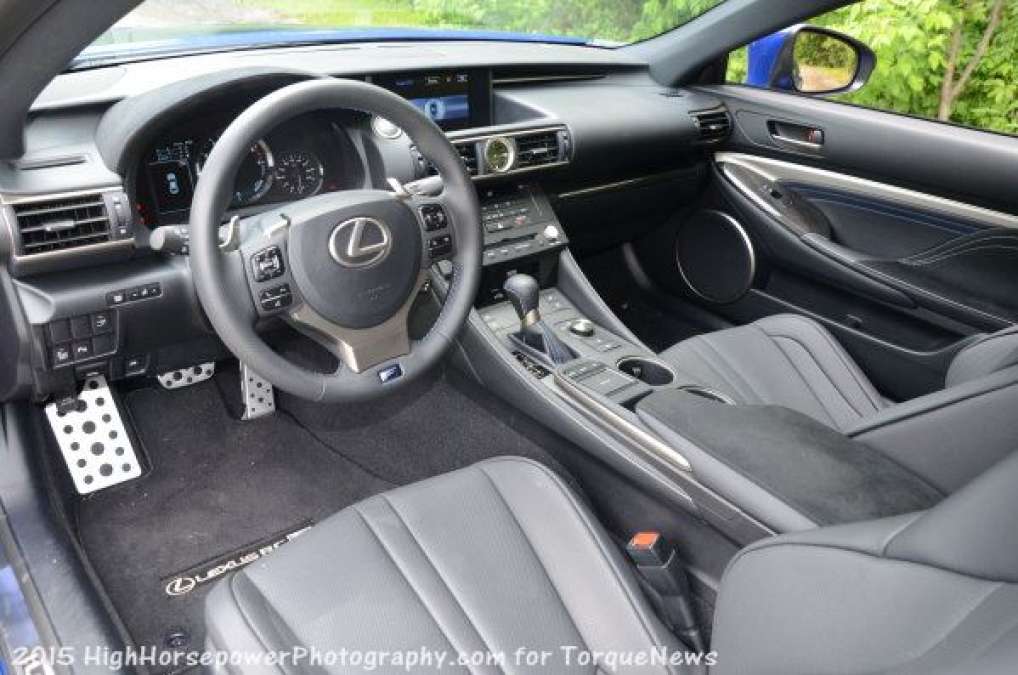
The leather wrapped seats look like something that came out of an exotic supercar, with deep base and side bolsters that are wide enough not to crush bigger drivers, but tight enough to keep you snugly in place during spirited cornering sessions. These seats look sporty and provide the support needed from a sporty seat, but Lexus has designed these front buckets in a way that makes them as comfortable as any luxury car bucket seat, with the rear bench seats offering a similar design, making the RC F more of a 2+2 than a traditional coupe. Add in the Mark Levinson sound system, the premium Lexus infotainment system, the automatic dual zone climate control system, the copious amounts of leather trim and the heated Lexus sport steering wheel complete with shift paddles and infotainment controls, and you have one of the most well-appointed 4-seat sports coupes sold in the world – especially when shopping for cars under $100,000.
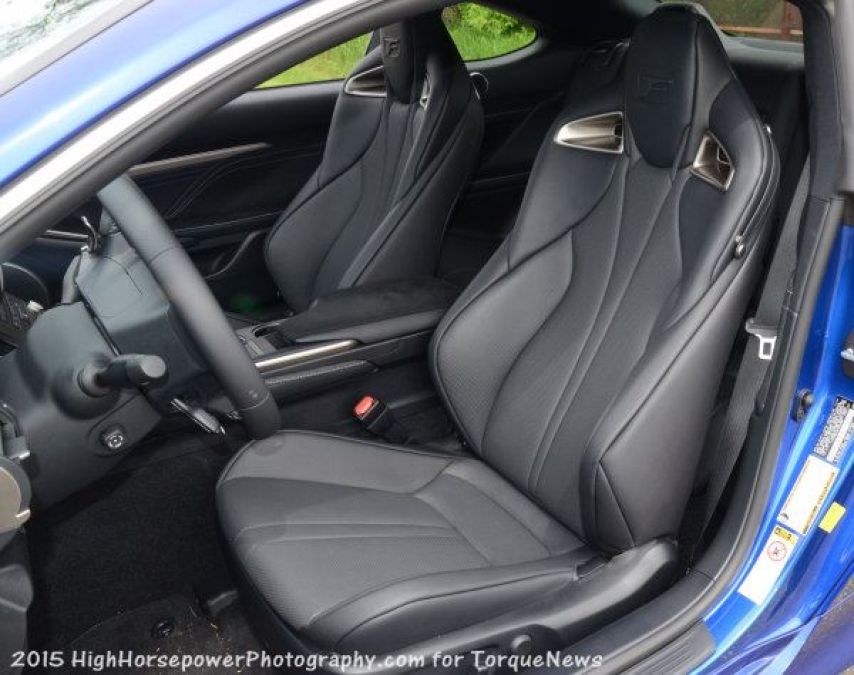
The interior of the Lexus RC F is truly one of the nicest available in the US market, and in that regard, the Ford Mustang and Chevrolet Camaro cannot compare. Sure, you can get sporty seats, a premium sound system, a premium infotainment system and heated/cooled leather in both the Ford and Chevy muscle cars, but even when all loaded up – you would be hard-pressed to find anyone who would call them luxury level. Click here for a closer look at the seats of the RC F.
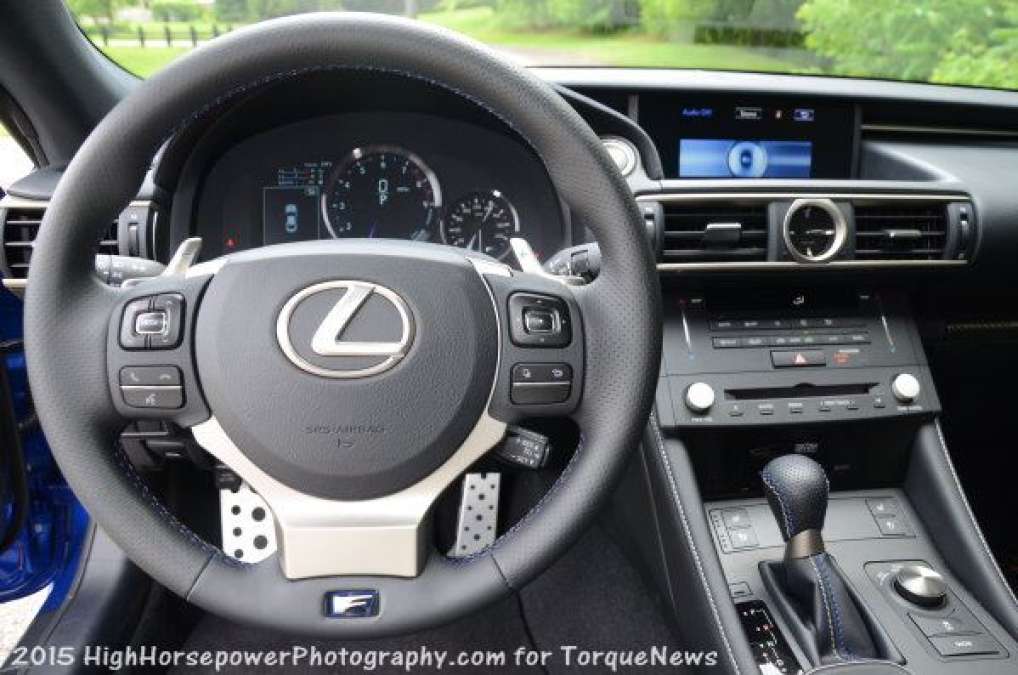
The closest competition in terms of luxury to the Lexus RC F would be the Dodge Challenger in SRT trim, as the highest level performance packages from Dodge include premium Laguna leather seats, the industry’s best infotainment system and a booming Harmon Kardon speaker system, along with a suite of impressive gadgets aside from the basic navigation setup that rivals anything from any luxury automaker. However, even the SRT Challenger will all of those goodies still feels more like a loaded muscle car than a luxury car.
Inside and out, the RC F leaves no question that it is a premium luxury car with high performance capabilities and a premium luxury price. Ultimately, if you are shopping for a 2-door sports coupe and luxury is a major focus, the Lexus RC F is going to be the far better choice than any of the American muscle cars.
On the other hand, if luxury is less important, onto the good stuff.
RC F and Muscle Car Power
For this look at how the Lexus RC F sizes up to the modern American muscle cars, I spent time in a 2015 Ford Mustang GT Premium, a 2015 Chevrolet Camaro 1LE and a 2015 Dodge Challenger SRT 392. The Lexus is powered by a 5.0L V8 with 467 horsepower and 389lb-t of torque. The Mustang GT has a 5.0L V8 with 435 horsepower and 400lb-ft of torque, the Camaro 1LE has a 6.2L V8 with 432hp and 420lb-ft of torque and the Challenger delivers 485 horsepower and 475lb-ft of torque. The Mustang, Camaro and Challenger are all offered with your choice of a manual or automatic transmission, while the RC F is sadly only available with an 8-speed automatic, but it is a lightning quick self-shifting gearbox with shift paddles that give you an incredible level of gear control. Click here for more on the RC F transmission.
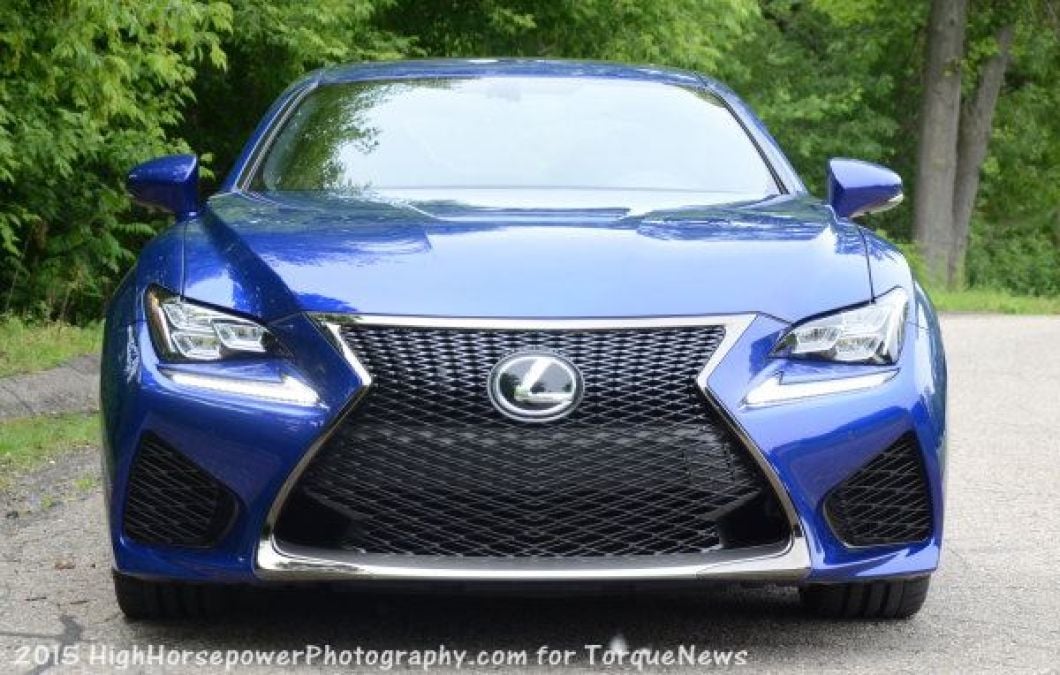
Like the Mustang GT, the Camaro 1LE and the Challenger SRT 392, the Lexus RC F has a sport tuned suspension setup and big Brembo brakes, as well as big wheels wrapped in wide, sticky tires all around. The Lexus suspension does a fine job of combining comfort and performance, but the surprising lack of driver controlled adjustability does put the RC F at a disadvantage over the Challenger SRT 392, which uses a three mode adaptive suspension system to offer the best of both worlds – performance and ride quality.
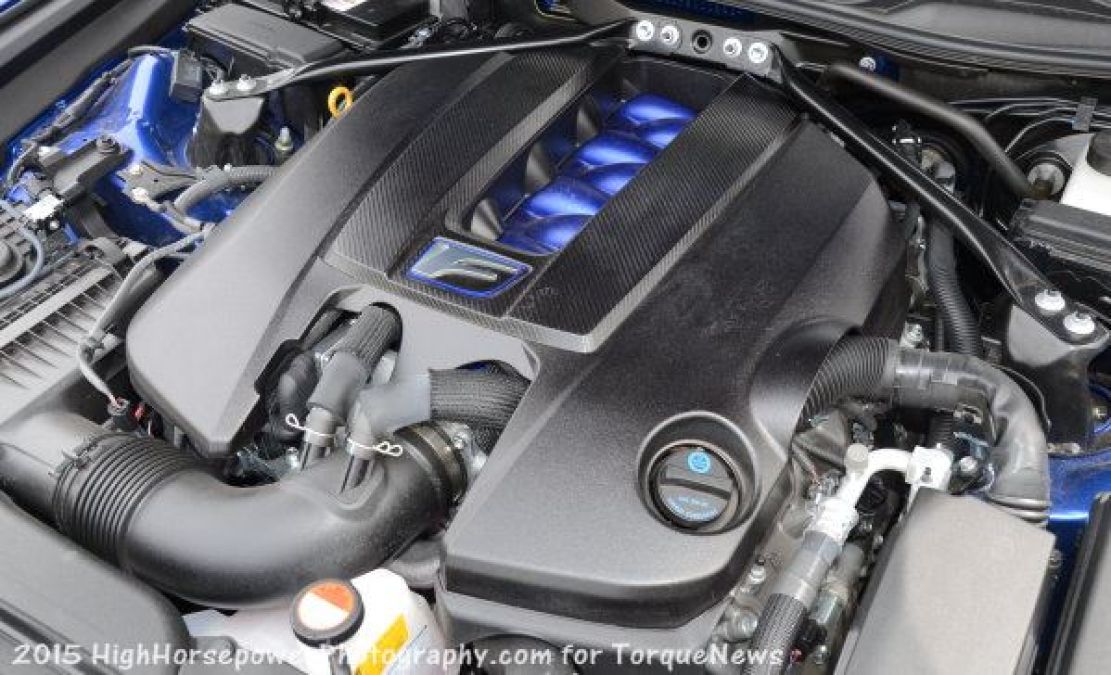
On paper, the Lexus RC F doesn’t seem all that different from the Mustang GT, Camaro 1LE or Challenger SRT 392, shy of the little gaps in ride quality, horsepower or torque, but it only takes a few minutes of driving each car to feel the difference between a Japanese luxury sports coupe and an American muscle car. All of these cars are quick off of the line, with V8 power hurdling all four cars to 60 miles per hour in the mid to low 4 second range, but the Lexus feels nothing like the muscle cars. Even when driving the RC F after the ground-hugging Camaro 1LE and Challenger SRT 392, the Lexus is far tighter to the ground, feeling far more like a supercar in how it covers ground than a muscle car. The SRT Challenger and 1LE Camaro might both offer better handling based on track times, but in terms of driving around the local roads, the Lexus feels like it has a firmer grip on the surface both when launching and cornering.
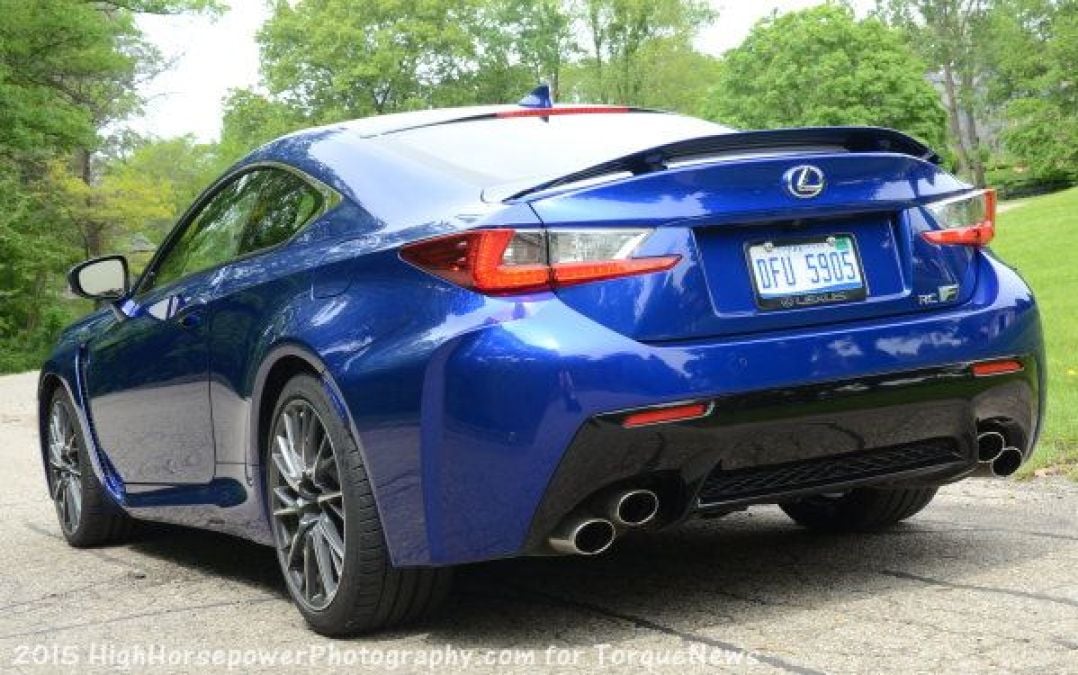
When you stomp on the throttle of the Lexus RC F from a stop, the tires chirp just a bit before the car bites and uses all 467 horsepower to rush up to speed. Shy of intentionally doing a burnout, the RC F does a great job of making use of all of that power, even when you just plain mash the pedal. In comparison, the Mustang GT and Challenger SRT 392 will quickly smoke the tires when you mash the throttle of those cars with the automatic transmission – with only the Camaro 1LE getting away from the line as confidently, but that car did so with a manual transmission, so it is harder to compare. Again, the RC F 0-60 times show that it isn’t all that much quicker than the V8 muscle cars, but the car feels like it moves out harder and more confidently, without a whole lot of unnecessary tire spin.
One area where the Lexus RC F does stand way out from the competition is during high speed cruising, as the sleek, curvy body of the RC F affords this Japanese luxury coupe better aerodynamics at high speed than any of the boxier American muscle cars. This is another one of those areas where the difference is slight, but when blasting along at high speeds, the Lexus is definitely the smoothest of the group.
The video below offers 3 minutes of driving in the RC F, shot from the bumper to get the best possible sound quality from the exhaust. Great hard launch at 1:28.
RC F, Muscle Car Handling
In terms of braking, the Lexus RC F will get stopped in a big hurry, as will the Mustang GT, the Camaro 1LE and the Challenger SRT 392, with the difference being subtle enough to not matter to most drivers, but in terms of handling, there is a big difference in the handling capabilities of the Lexus and the three American muscle cars. Even without the adaptive suspension setup of the lower performance Lexus RC350 F Sport, the RC F will carve through the tight, low speed turns and the broader, high speed corners without breaking a sweat and without beating up the occupants.
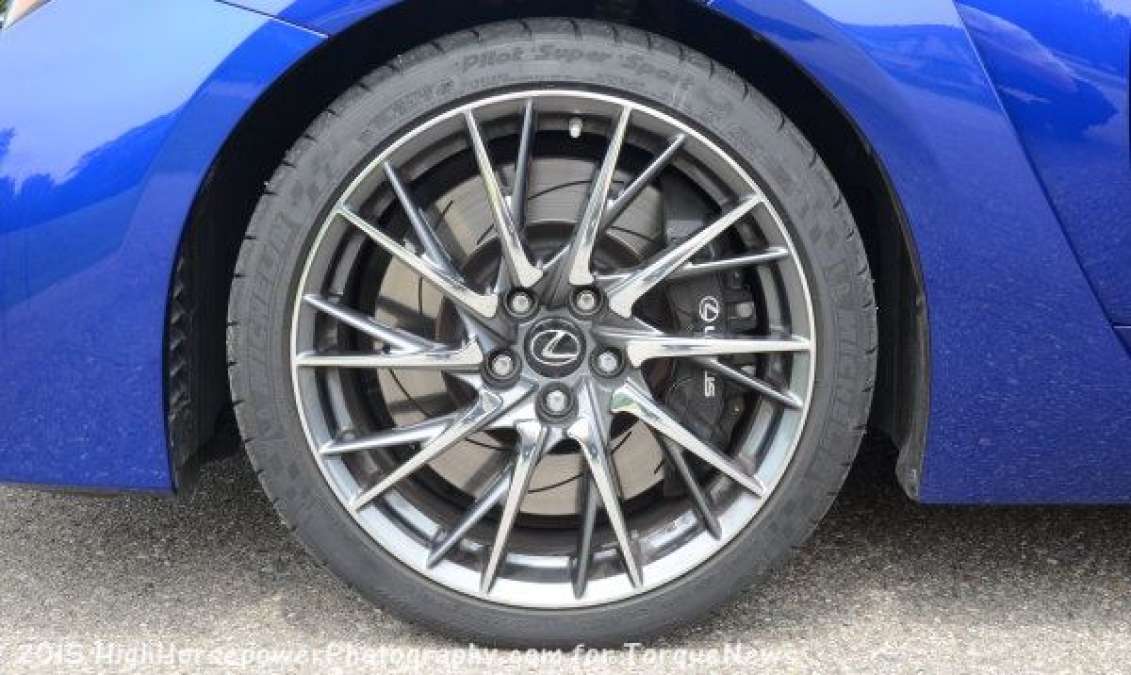
The 1LE Camaro is built for track handling, so it has a clear advantage in cornering, but it doesn’t ride anywhere near as well as the Lexus. The Mustang GT has a better ride than any past models, but it isn’t quite as smooth as the RC F, nor does the standard Mustang GT feel as nimble in the corners. The Mustang is far more fun to throw into corners, but if you want a car that sticks like glue to the tough turns – the Lexus has the real world advantage. Finally, the Challenger SRT 392 uses an adaptive 3-mode suspension setup that provides it with the greatest spread of ride quality and performance handling, so the Challenger has an advantage in both comfort and cornering – but not at the same time.
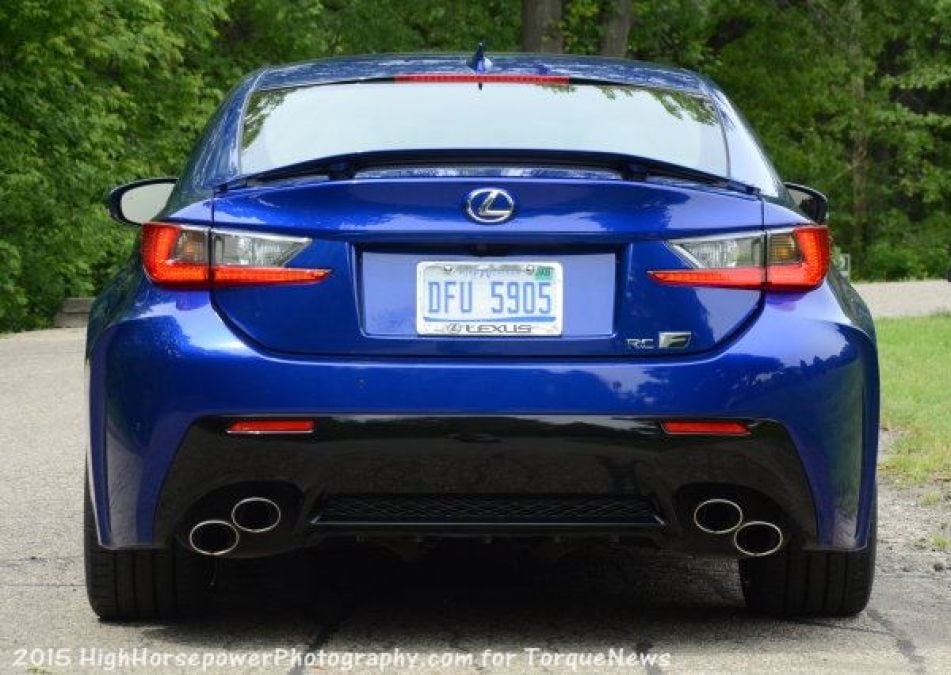
In the end, the braking capabilities of the Lexus RC F are right on par with that of the Ford Mustang GT, the Chevrolet Camaro 1LE and the Dodge Challenger SRT 392, but there are big differences in both ride quality and handling capabilities across the board. The Lexus offers a remarkable confident ride that I don’t hesitate to call supercar-like, and that is hard to find in a muscle car without stepping up to a higher end performance model. The Camaro 1LE will out corner the Lexus, but it won’t offer anywhere near the comfort level and the SRT Challenger will offer comfort or performance – but not both at the same time. Once again, if pure performance is your key concern, you might be better off looking at the new American muscle cars, but if you want a sports coupe that feels more like a supercar in how it covers the road – the RC F is an awesome driver’s car.
The Modern Performance Market is Remarkable - and So is the RC F
In closing, it should go without saying that someone who is more concerned with comfort and premium amenities would probably prefer the Lexus RC F over the Ford Mustang GT, the Chevrolet Camaro SS and the Dodge Challenger SRT 392. The issue is that the RC F starts at $63k, where the Mustang and Camaro start in the low $30k range and the SRT 392 Challenger starts in the mid $40k range, so the Lexus struggles when the comparison looks at ‘bang for the buck’. However, the fact that the Lexus RC F matches up so well with the Ford Mustang GT, the Camaro 1LE and the Challenger SRT 392 shows just how far the performance industry has grown on both sides. Never before have we had premium Japanese luxury coupes (non-supercars) that could hang with the American muscle cars in acceleration, cornering, braking and fun to drive factor while still maintaining the high level of luxury comfort that is a must in a modern Lexus vehicle.
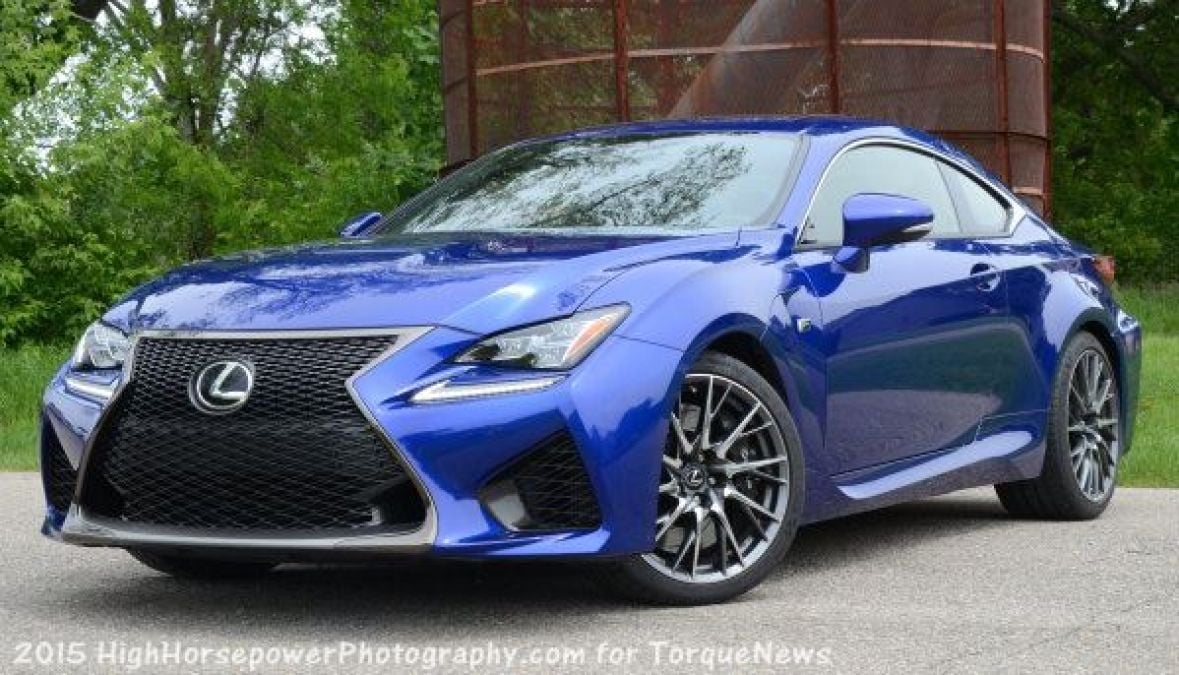
The level at which the Lexus RC F compares with the Mustang GT, the Camaro 1LE and the Challenger SRT 392 speaks volumes of all four automakers – as the Lexus brand is reaching new levels of performance in an affordable coupe while the American muscle cars have all improved by a great deal in terms of interior amenities and ride quality.
This is a great time to be a performance car fan, whether your favorite brands come from Europe, Japan or the United States and the RC F is clearly the best non-supercar sports coupe to come out of Japan, maybe ever.


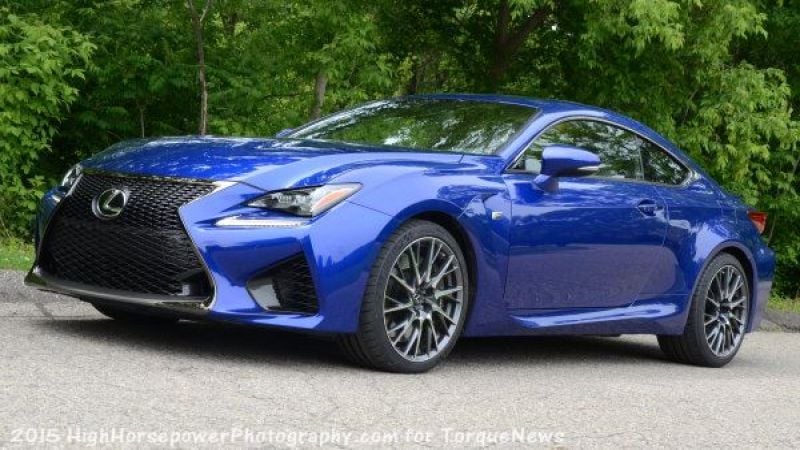










Comments
Since the Camaro is 6 model
Permalink
Since the Camaro is 6 model years old, and the RC F is new, the comparison is not particularly valid.
Do the comparison again with an all-new 2016 Camaro. Although the RC F is a very good automobile it
certainly doesn't represent value. To Toyota: Slap a Toyota emblem on the RC F and charge 20k less.
Big RC F disappointment: No heads-up display (a safety issue at this performance level?) – I'll wait for the Camaro.
Seems like at a starting
Permalink
Seems like at a starting price of $63k, they should be comparing this to a Corvette Stingray. Not the muscle cars that start and half of that. At nearly $100k loaded, I think I'd take a loaded up Stingray and pick up an Impala for when I want a "comfortable" ride. Especially with the missing "performance car required" features missing (ie: HUD, Magnetic Ride Control, etc). To call a car without any of those features "near supercar", I think, is definitely an exaggeration.
I got my Rcf since four days
Permalink
I got my Rcf since four days and i confirm, it's an excellent car. One point that i definitely comfirm :
Among M4, AMG, RS5 and Rcf(i've tested all of those before deciding) , the RCF is the most confident car to drive very very fast. I'm talking about real life high speed that i drive in Autobahns between germany and Switzerland.
Einfach meine Erfahrung.
Mike.
Lol, the camero is junk!!!!
Permalink
Lol, the camero is junk!!!!
Yeah I prefer the hellcat.
The Lexus rc f is a nice car though